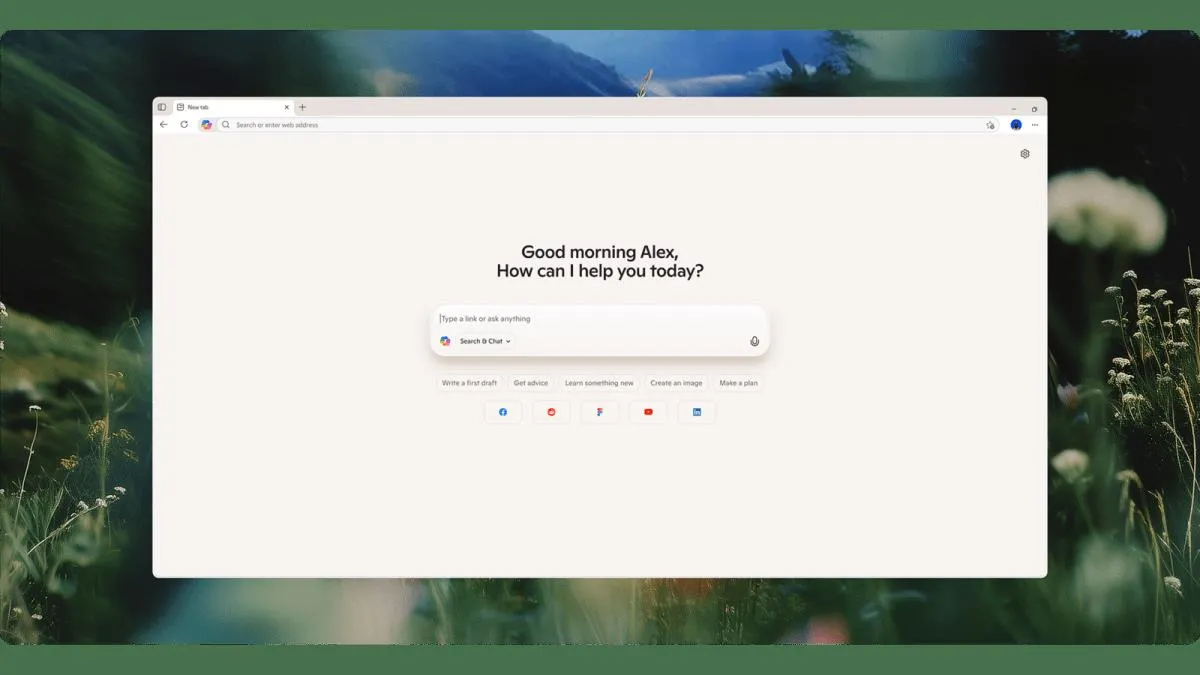
With the growing demand for AI-powered browsers, Microsoft has introduced an innovative feature in its Edge browser called Copilot Mode. Announced on Monday, this new functionality allows users to browse the internet while receiving assistance from AI. The goal of Copilot Mode is to create a virtual assistant that understands users' research needs, predicts their intentions, and takes action on their behalf.
Although the effectiveness of Copilot Mode in real-world applications is yet to be determined, Microsoft emphasizes that this feature is still in its experimental phase. By default, users must opt in to access this feature, which is currently available for free to all Mac or PC users who have access to Copilot.
At its launch, Copilot Mode includes several key components, with plans for more enhancements in the future. Once activated, Edge users will encounter a new tab page that allows them to search, chat, and navigate the web with the assistance of Copilot. For instance, when visiting a specific webpage, users can consult Copilot for additional help. An example provided by Microsoft illustrates how users might ask the AI whether a recipe they're viewing can be made vegan. In response, Copilot can suggest appropriate substitutions, streamlining the user's experience.
This interaction mimics the queries users might currently pose to AI chatbots, eliminating the need to copy and paste content for reference. Moreover, users can request Copilot to simply present the recipe itself, bypassing lengthy narratives that often accompany online recipes.
In addition to recipe assistance, Microsoft claims that Copilot can manage a variety of tasks on behalf of users, such as booking appointments, creating shopping lists, and drafting content. This "agentic" approach to web browsing represents a significant advancement in the AI browser race. However, it remains uncertain whether consumers will readily adopt this technology. The primary objective of Copilot is to facilitate everyday tasks, such as reserving a room on Booking.com or booking flights through Kayak.
It's noteworthy that interacting with an AI for these tasks may not always be more efficient than completing them manually, especially for users who are already familiar with the respective websites. Nonetheless, Copilot's voice input feature could prove beneficial for individuals who are less tech-savvy or those with limited mobility.
Looking ahead, Microsoft plans to enhance Copilot's capabilities by allowing users to provide additional context, such as credentials or browsing history, for more complex tasks like bookings. Currently, these actions require more manual input. An exciting aspect of Copilot is its potential as a research companion. With user permission, Copilot can view all open tabs to better understand the user's browsing activity. This feature could be particularly useful for product comparisons or online research, such as checking flight or hotel prices across multiple sites.
While these use cases are typical for AI chatbots, integrating them directly into the browser could expedite the user's experience in conveying their needs to the digital assistant. In the future, Copilot is expected to prompt users to continue their projects or research by suggesting next steps.
Microsoft assures users that Copilot will only access their browsing content with explicit permission, and the process will be transparent, featuring visual cues for the end user. However, the capability to toggle a feature that can view and listen to users while they search may raise privacy concerns for some individuals.
In summary, Microsoft’s Copilot Mode in Edge Browser represents a significant step forward in the integration of AI technology into everyday web browsing. As users explore its capabilities, the balance between convenience and privacy will play a crucial role in its adoption.